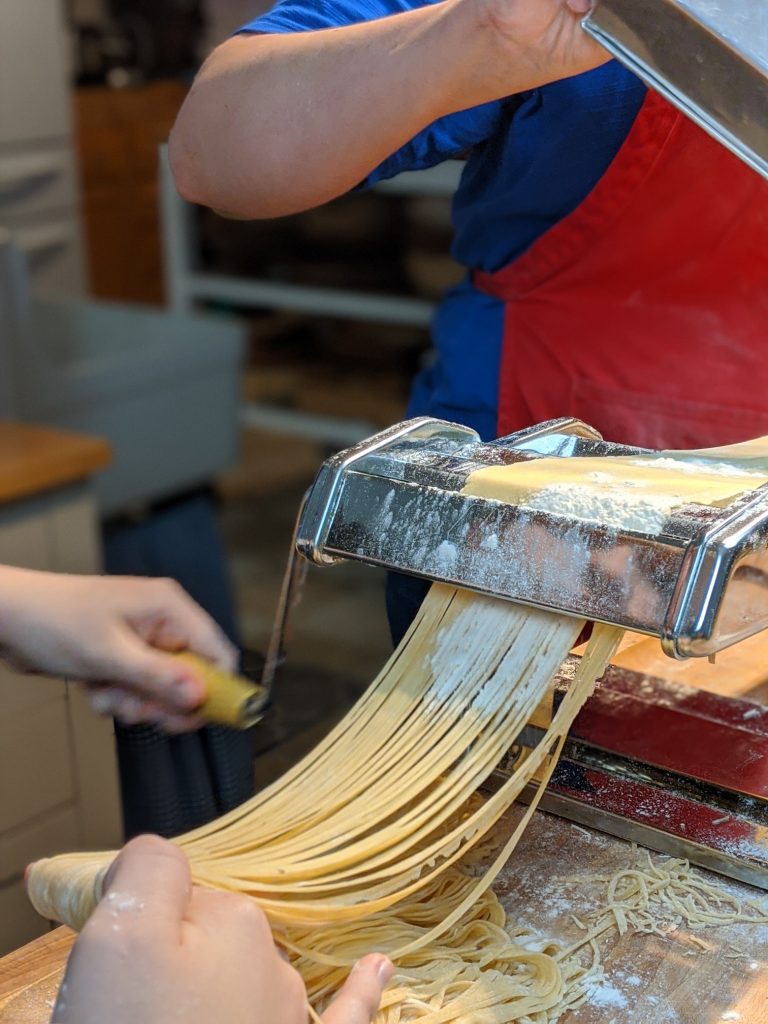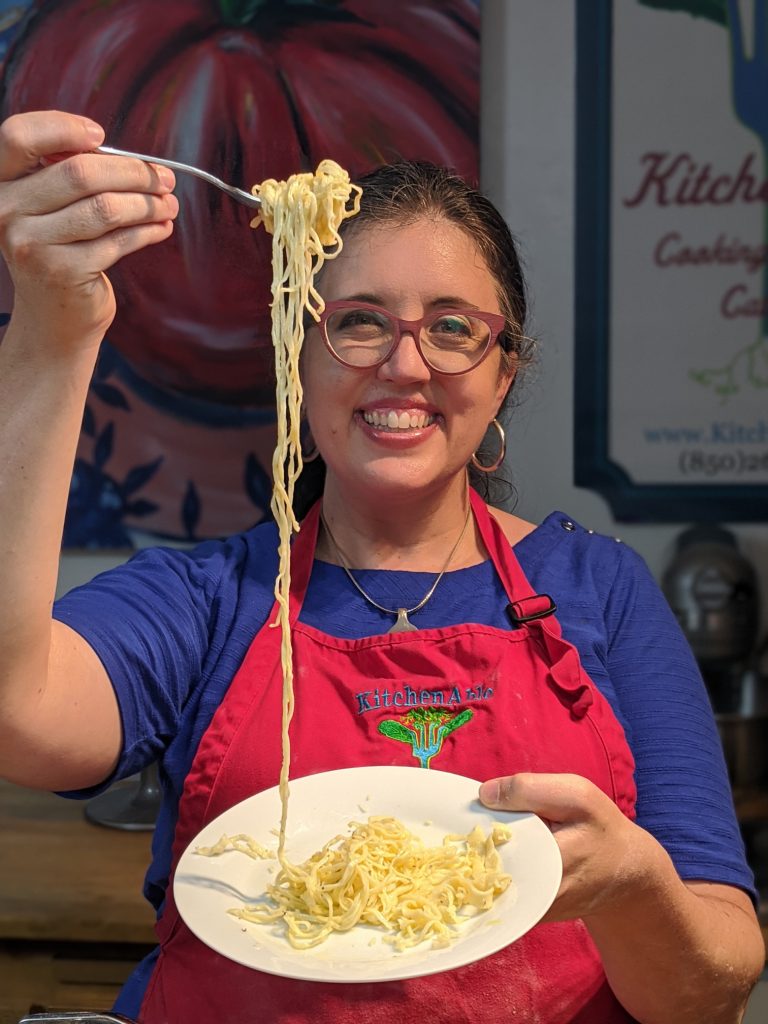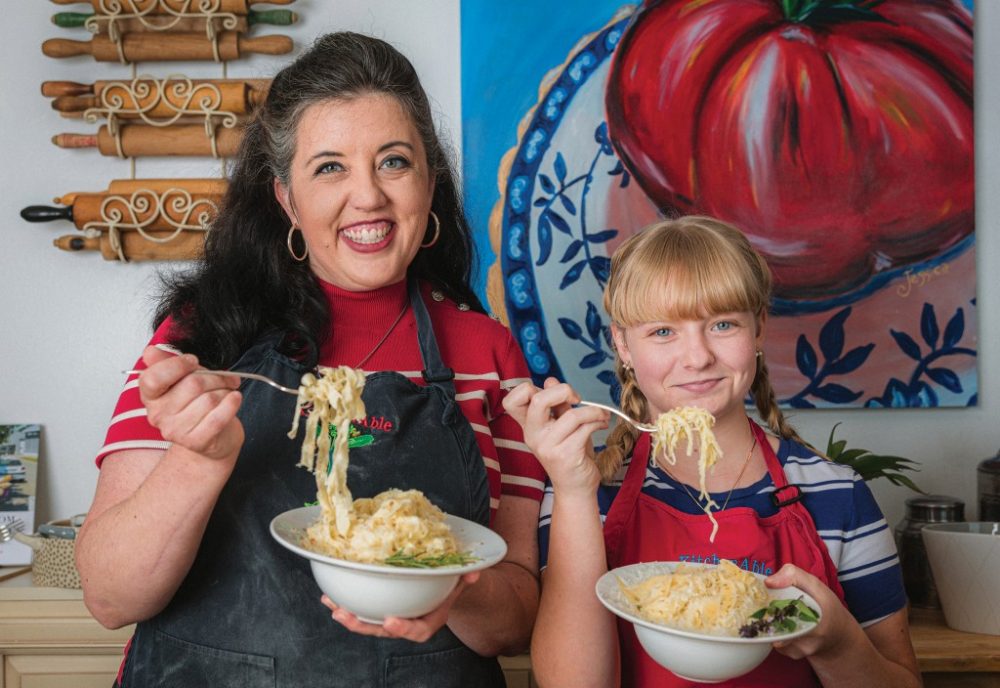I’d like to share an article I wrote for Tallahassee Magazine, published in the September issue. You can get an online lesson from chef Jessica in a virtual class at 7 p.m. Sept. 14 on KitchenAble Cooking School and Catering on Facebook Live.
You Get What You Knead
By Rochelle Koff
Why would you spend the time and effort making homemade pasta when you can simply tear open a box of noodles and throw them in a pot? But anyone who has to ask that question has never experienced the joy of tasting silky and soul-satisfying fresh-made pasta. It’s like eating a luscious, sun-ripened farm tomato versus one that’s mass-produced to blah.
Yet, I had always been too intimidated to make my own pasta. Until now. After hearing about so many people baking bread or making whipped dalgona coffee this summer, I decided to take the plunge — with the guidance of a friend, Chef Jessica Bright McMullen, owner of KitchenAble Cooking School and Catering, and a little muscle from my husband — you can make pasta yourself, but it sure helps to have another set of hands.
Connected via FaceTime, Jessica and daughter Madeline made pasta at their Lake Ella cooking school while we tried to keep pace at home, kneading, rolling and stretching these humble ingredients, trying not to cover my dogs, us and the entire kitchen with puffs of bread flour.
Before you begin the pasta process, clean a space on your kitchen counter. A big space. Get all your ingredients measured and ready to go.
For equipment, you’ll need a liquid measuring cup, plastic wrap, rolling pin, bench or pastry scraper and a hand-cranked roller, which seems like a good compromise between an electric pasta maker and doing it yourself with a knife — not impossible but a longer, harder process for a newbie like me.
You start by placing your pound of bread or semolina flour on the counter and shaping it into a mound. Mix it with a half-teaspoon of salt.
Make a well in the flour. Then crack five eggs into a measuring cup, add 1 tablespoon of olive oil and mix it all up with a fork.
“Having the oil makes the pasta taste better,” Jessica said.
Next came the tough part for me. You have to slowly pour the eggs into the center well, and you need to keep the eggs from running outside the flour berm. Jessica’s eggs behaved nicely while mine could have won the Indy 500. Eventually, I started kneading.

You then begin the rolling process, steering the dough through the machine until it gets longer and thinner. This is when my husband got into the picture. It helps to have one person cranking the dough through the roller while the other person gently pulls it, stretching it gently. Fold the stretched-out dough accordion style as it gets longer, then feed it again, and again, to get to the thinness you want. Repeat the process with the other half of the dough.
After you coax the dough into a smooth ball, wrap it in plastic for 15 minutes. During that time, the gluten will start to relax and make it easier to roll the dough out, Jessica said. After 15 minutes, unwrap the dough, cut it in half and put the other part aside, again wrapped in plastic.
This is a good time to start boiling a pot of water with more than a dash of salt.
The pasta roller turns out a variety of noodle shapes, and we chose fettuccine. When these babies started coming out of the roller, it was like Harry Potter had cast a spell in my kitchen. They were real noodles!
You can freeze some of the raw pasta, but we cooked it all. Boiling is a quick process. When the noodles start to float, take them out with a spider strainer if you have one. It’s not easy to reheat leftovers, but you can get close to that first ecstasy by popping them into boiling water for a few seconds.

These noodles are so good and glorious that you can eat them simply with a swish of butter, garlic and Parmesan. And with a bit of practice? There’s a world of pastabilities.
Top picture by Dave Barfield. See a gallery of pictures by Dave and more info at tallahasseemagazine.com/you-get-what-you-knead/

